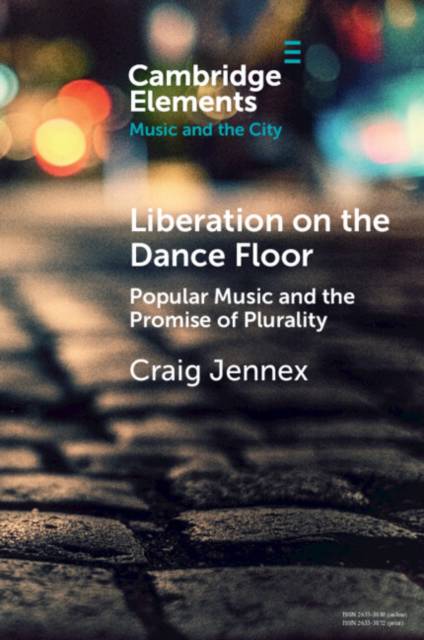
- Afhalen na 1 uur in een winkel met voorraad
- Gratis thuislevering in België vanaf € 30
- Ruim aanbod met 7 miljoen producten
- Afhalen na 1 uur in een winkel met voorraad
- Gratis thuislevering in België vanaf € 30
- Ruim aanbod met 7 miljoen producten
Zoeken
€ 33,45
+ 66 punten
Uitvoering
Omschrijving
Lesbian and gay liberation movements of the twentieth century were made possible through heterogeneous dance music cultures that flourished in urban spaces. In an era of profound political challenges, collective dance enabled lesbian and gay individuals to connect with their bodies and the bodies of others, experience a sense of communal belonging, explore non-normative gender and sexual desires, and perceive individual and collective power in a heteronormative reality that regularly suppressed both. For lesbians and gays, collective dance introduced them to difference as a dynamic catalyst of political change, allowing them to experience the promise of liberation. This Element combines ethnographic research, archival materials, and popular music histories to analyze the role of popular music participation in lesbian and gay liberation in US cities and demonstrate how collective dance served as a transformative site of political contestation and imagination. This title is also available as Open Access on Cambridge Core.
Specificaties
Betrokkenen
- Auteur(s):
- Uitgeverij:
Inhoud
- Aantal bladzijden:
- 80
- Taal:
- Engels
- Reeks:
Eigenschappen
- Productcode (EAN):
- 9781009351805
- Verschijningsdatum:
- 2/10/2025
- Uitvoering:
- Paperback
- Formaat:
- Trade paperback (VS)
- Afmetingen:
- 152 mm x 229 mm
- Gewicht:
- 117 g

Alleen bij Standaard Boekhandel
+ 66 punten op je klantenkaart van Standaard Boekhandel
Beoordelingen
We publiceren alleen reviews die voldoen aan de voorwaarden voor reviews. Bekijk onze voorwaarden voor reviews.











